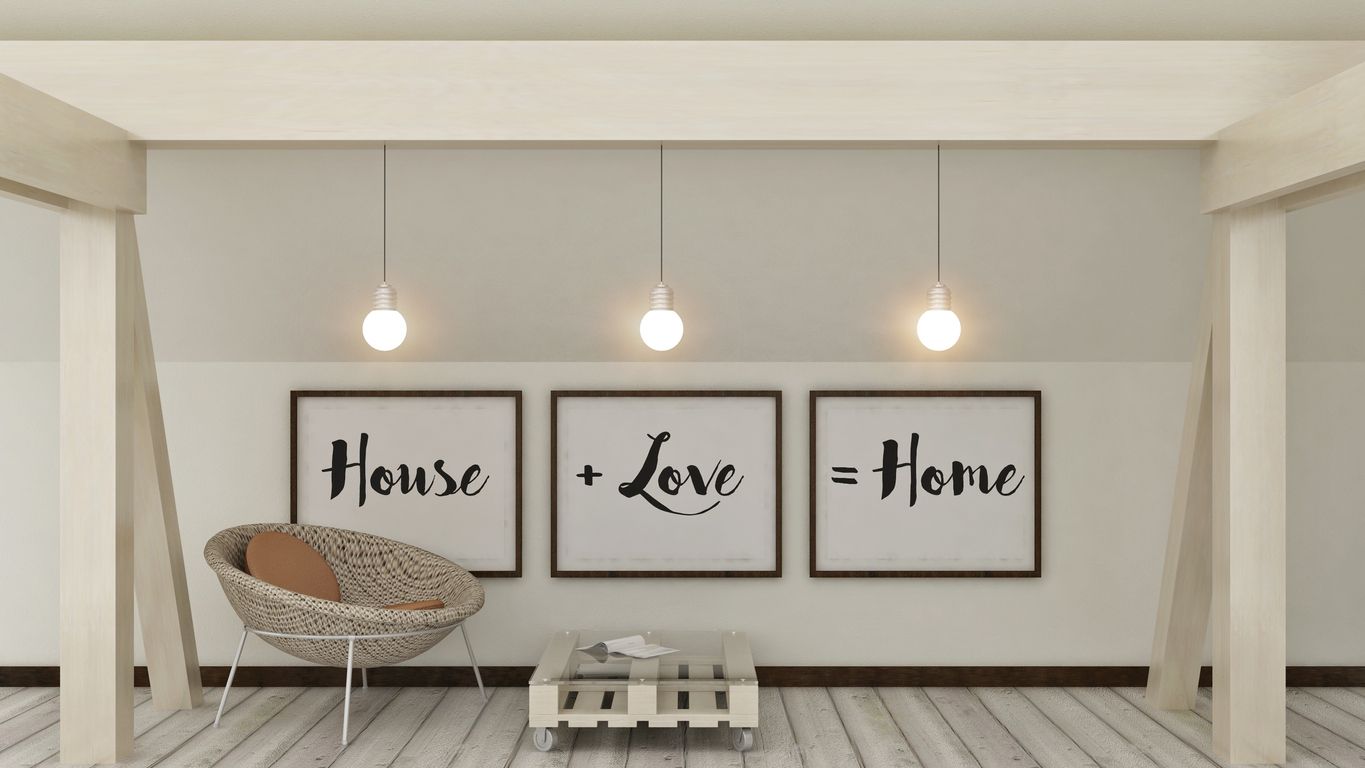We spend a lot of time at home, more so since the pandemic. Our house is not only our shelter, but it also serves as our recreational space and refuge. And nowadays, in this increased remote working era, it’s often our workspace, too!
Since we spend a great deal of time indoors, our environment is vital for our well-being, and its effects are often underestimated. Did you know that the interior design of your home or workplace can significantly impact your mental health?
Estimated reading time: 6.5 minutes
 Therefore, creating a home and a workspace that uplifts and supports mental and emotional health is vital. And leveraging simple interior design changes can improve your state of mind. But before we dive into how you can support mental health through your environment, let’s get on the same page and clarify what exactly interior design is referring to.
Therefore, creating a home and a workspace that uplifts and supports mental and emotional health is vital. And leveraging simple interior design changes can improve your state of mind. But before we dive into how you can support mental health through your environment, let’s get on the same page and clarify what exactly interior design is referring to.
What Is Interior Design?
Wikipedia states: “Interior design is the science and art of enhancing the interior of a building to achieve a healthier and more aesthetically pleasing environment for the people using the space.” So, in essence, it is how we experience our environment and its effects on us.
Everything in your home and office holds power to relax or energize you, stress or inspire and uplift you.
Let's look at some research that backs these tips and the most impactful ways you can change your interior design to boost your mental wellness.
The Correlation Between Design and Mental Wellness
A growing body of evidence backs the connection between interior design and positive mental health. For instance, one study found that indoor workers outperformed their colleagues when they had ample exposure to natural light. Other studies have made interesting findings about the connection between mental wellness and design. Below are a few of the highlights:
- Higher ceilings have been connected to increased creativity.
- Better organization shows an increase in a sense of peacefulness.
- Clutter raises cortisol levels, increasing stress.
- A sense of spaciousness elevates emotions.
- Principles of design comprising balance, proportion, symmetry, and rhythm can introduce a sense of harmony.
Deep dive: “The Impact of Interior Design on Mental Health” and “How Interior Design Affects Mental Health.”
The Power of Color in Impacting Our Mental State
The colors we choose for interior design can substantially influence our mental state. Scientists have been researching color and its effects as far back as the 1700s, with more modern studies demonstrating how color can affect mood.
Each color has its own associations and emotions.
- Red is associated with high-energy emotions like power, love, anger, and even lust. Red can also invoke action and greater alertness.
- Yellow is a complicated color that connects with feelings of happiness and natural beauty but also relates to discount prices and budget.
- Green is associated with health and nature, making it an excellent color for adding some outdoors to your interior design.
- Orange is associated with adventure and rugged design choices.
- White inspires feelings of cleanliness and sincerity but can also feel sterile and unwelcoming if overdone.
- Black brings ideas of luxury and sophistication, but it also sponges up a lot of ambient light and can feel dampening.
Colors can even be used to invoke certain moods, and this knowledge is used in color therapy. Think of ways you can utilize these same principles to bring more balance to your home and workplace.
Keep Your Home and Workspace Clutter-Free
Clutter may cause more than a messy home. It can create a negative feedback loop with stress, anxiety, and depression. In short, a cluttered space is often a symptom of stress and also contributes to it.
A clean and organized space helps to open things up and reduce overall stress levels. Regular cleaning also improves air quality and circulation while reducing dust and allergens.
Here are a few tips for decluttering your home to improve your mental state.
- Regularly audit your closets for clothes and shoes and remove those you rarely wear.
This small but consistent action affords more storage space. Clearing unused items minimizes clutter and makes order more manageable. And letting go of the old helps creates spaciousness for the new, even emotionally. - Tour your home (or office) as if you’re showing it as a realtor to a prospective buyer. When do you cringe, and what are you most proud of? These feelings will provide clues for changes to up-level your space.
Here's a Feng Shui checklist that may also be helpful. - Take pictures of your home and review the photos for possible changes.
This activity highlights cluttered or problem areas that have become so familiar you may no longer even notice them. Only keep what you need, use, and value (including sentimental value). You might even consider adding more simplicity and taking a small step toward minimalism. Fewer belongings to care for = more time. - View your home as a new guest.
When guests visit, we pay close attention to how our homes reflect our personalities and standards. By seeing your home through a guest’s eyes, you’ll spot little and big changes to improve the space. - Create a cleaning routine.
It’s helpful to support yourself with a list of daily, weekly, as-needed, quarterly, or yearly tasks. Keeping up with a home requires a lot, so a system helps.
Daily: tasks like dishes, wiping counters, and sweeping.
Weekly: more thorough cleaning tasks, such as dusting, vacuuming, waxing floors, sterilizing bathrooms, and watering plants.
As needed, quarterly or yearly: tasks such as cleaning windows, wiping doorknobs, dusting for cobwebs on the ceilings, reorganizing and giving away unused items, or perhaps landscaping in the spring.
Make a list that meets your needs; it can be short and succinct, or comprehensive. Whatever supports you best—you can always revise it to suit your needs better later.
You can find more tips in our decluttering guide.
The Importance of Lighting in Mental Health
Natural lighting is one of the best things you can add to your interior design to boost your mood. Recent research from Monash University has shown that getting more natural lighting throughout the day improves your psychological health.
Too much artificial lighting can negatively impact your mental health. Fluorescent lights are often the biggest culprit and have been known to cause reduced productivity, anxiety, and even headaches.
Here are some tips to improve interior lighting and boost mental health.
- Incorporate natural light sources whenever possible; windows are the best light sources!
- Use dimmers and layer interior lighting by using lamps instead of only relying on overhead lights.
- Clean and repair light fixtures frequently; even bulbs can require dusting.
The Ambiance Effect
There's a strong connection between ambient temperature and mental wellness. Researchers have found evidence that cooler temperatures are more beneficial, while warmer temperatures can lead to increased mental health issues.
Your home’s temperature and indoor air quality play a role in your mental health. Therefore, consider making changes that improve indoor air quality. Poor air quality can turn even the best-designed space into a source of anxiety and depression.
To help you make adjustments, we've got a few quick tips for improving the ambiance in your home or office.
- Clean ducts and air filters regularly. This cleaning is the easiest and fastest way to improve indoor air quality.
- Once a week (even in the winter), open up your doors and windows to air out the space for fifteen minutes. This practice gets rid of stale air and creates more airflow, which can be beneficial, especially if you've had someone sick recently.
- Make sure spaces have ventilation options like fans, windows, and clean vents.
- Find the right indoor cooler and ventilation for your needs. For instance, a space used as your workshop or for your favorite hobby needs to be evaluated for air quality and temperature, especially if you spend considerable time in the area. However, even providing air conditioning for garages and other larger spaces that you frequent can be helpful for enhanced air quality.
- Make sure you have several options for particularly humid and hot days.
 Bring in the Greenery!
Bring in the Greenery!
Bringing nature into your environment and adding indoor greenery will quickly improve the air quality to support your mental state. And it’s aesthetically pleasing to add plants, too!
Deep dive into the benefits of adding some greenery to your interior design.
Here are three ideas for how you can bring the outdoors into your interior design:
Start with easy indoor plants to grow and care for, such as:
- Peace Lily
- Succulents and Cacti
- Jade
- Spider plant
- Monstera
- ZZ plant (stands for Zamioculcas zamiifolia)
- Pothos
- Aloe (great for burns and cuts, too!)
Use indoor gardening as a way to open up new lighting sources in your design. You might even consider turning track lighting into a grow light!
Collect items from nature and fill a bowl or vase. Some items that are easy to find and add a special natural touch are pinecones, branches of pussy willows, and beautiful polished rocks or petrified wood. You can get ideas by visiting furniture stores; they have great displays to enhance the look and feel of the rooms.
In conclusion, there are many simple interior design decisions that you can make to improve your overall mental well-being and make your home or office a place you love spending time in.
Every decision you make, from your choice of color scheme to indoor lighting decisions, can impact your mental wellness. Think about the tips we've laid out in this article, and start making small changes to improve your psychological well-being.
Related reading: "Exercising Your Brain: 6 Ways to Boost Brain Fitness and Mental Health."
Discover more ways to enrich your mental health; contact us at Heartmanity for mental wellness tips and more information on brain fitness and training.








